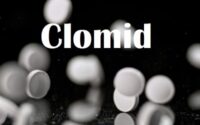What are Steroids
 What are Steroids
What are Steroids
Steroids stand at the intersection of medicine, sports, and societal perceptions, embodying a complex array of compounds that have both revolutionized therapeutic practices and ignited controversies. Often shrouded in misconceptions and stigma, steroids encompass a broad class of organic compounds with diverse structures, functions, and implications for health and disease. Understanding steroids requires delving into the science behind their biological roles, therapeutic applications, and the ethical and health concerns associated with their misuse, particularly in sports.
At their core, steroids are organic compounds characterized by a specific molecular structure that includes four interconnected rings of carbon atoms. This structural hallmark is the foundation for an astonishing variety of biological molecules, including vital hormones such as estrogen, testosterone, and cortisol. The versatility of steroids is underscored by their pivotal roles in a myriad of physiological processes, ranging from the regulation of metabolism and immune response to the modulation of reproductive functions and stress responses.
Most importantly
In the realm of medicine, steroids have been harnessed for their potent anti-inflammatory and immunosuppressive properties. Glucocorticoids, a class of steroids, are routinely prescribed to treat conditions that involve inflammation, such as asthma, rheumatoid arthritis, and inflammatory bowel disease. Similarly, corticosteroids are employed in managing autoimmune diseases, leveraging their ability to suppress the body’s immune response. The therapeutic benefits of roids in alleviating symptoms and improving the quality of life for individuals with chronic conditions are undeniable. However, their long-term use is often associated with a spectrum of side effects, including osteoporosis, increased susceptibility to infections, and potential disruption of hormonal balance, underscoring the necessity for judicious and monitored usage.
Medical Applications
Beyond their medical applications, steroids have also permeated the world of sports and fitness, often with contentious implications. Anabolic-androgenic steroids (AAS) are synthetic derivatives of testosterone designed to enhance muscle growth and increase physical strength. Their capacity to boost endurance and reduce recovery times has made them appealing to athletes across a range of sports, leading to a perennial ethical and legal battle against doping. The abuse of AAS poses significant health risks, such as cardiovascular diseases, liver damage, hormonal imbalances, and psychiatric effects including aggression and mood swings. The quest for enhanced performance must be juxtaposed against these health risks and the broader ethical considerations concerning fairness and the integrity of athletic competition.
The societal perception of steroids is profoundly influenced by their association with doping scandals and the emphasis on physical appearance in contemporary culture. This has contributed to a stigmatization of steroid use, overshadowing their legitimate medical applications and the nuanced balance of risks and benefits. The dialogue surrounding steroids often lacks a balanced perspective, veering between uncritical acceptance and outright condemnation. A more informed discourse is necessary, one that acknowledges the complexity of steroids, distinguishes between medically supervised therapy and unsanctioned usage, and recognizes the diversity of reasons behind their use.
Conclusion
Steroids embody a fascinating paradox, serving as both boon and bane in the tapestry of human health and achievement. Their synthesis and study have yielded invaluable insights into biochemistry and physiology, offering therapeutic benefits that have transformed lives. Nevertheless, the shadow of abuse in sports and the pursuit of unattainable physical ideals challenge our collective responsibility to educate, regulate, and reconcile the manifold faces of steroids. As science advances and societal attitudes evolve, the story of steroids will likely continue to be marked by controversy and discovery, compelling us to navigate the delicate balance between their potentials and pitfalls.
More info:


